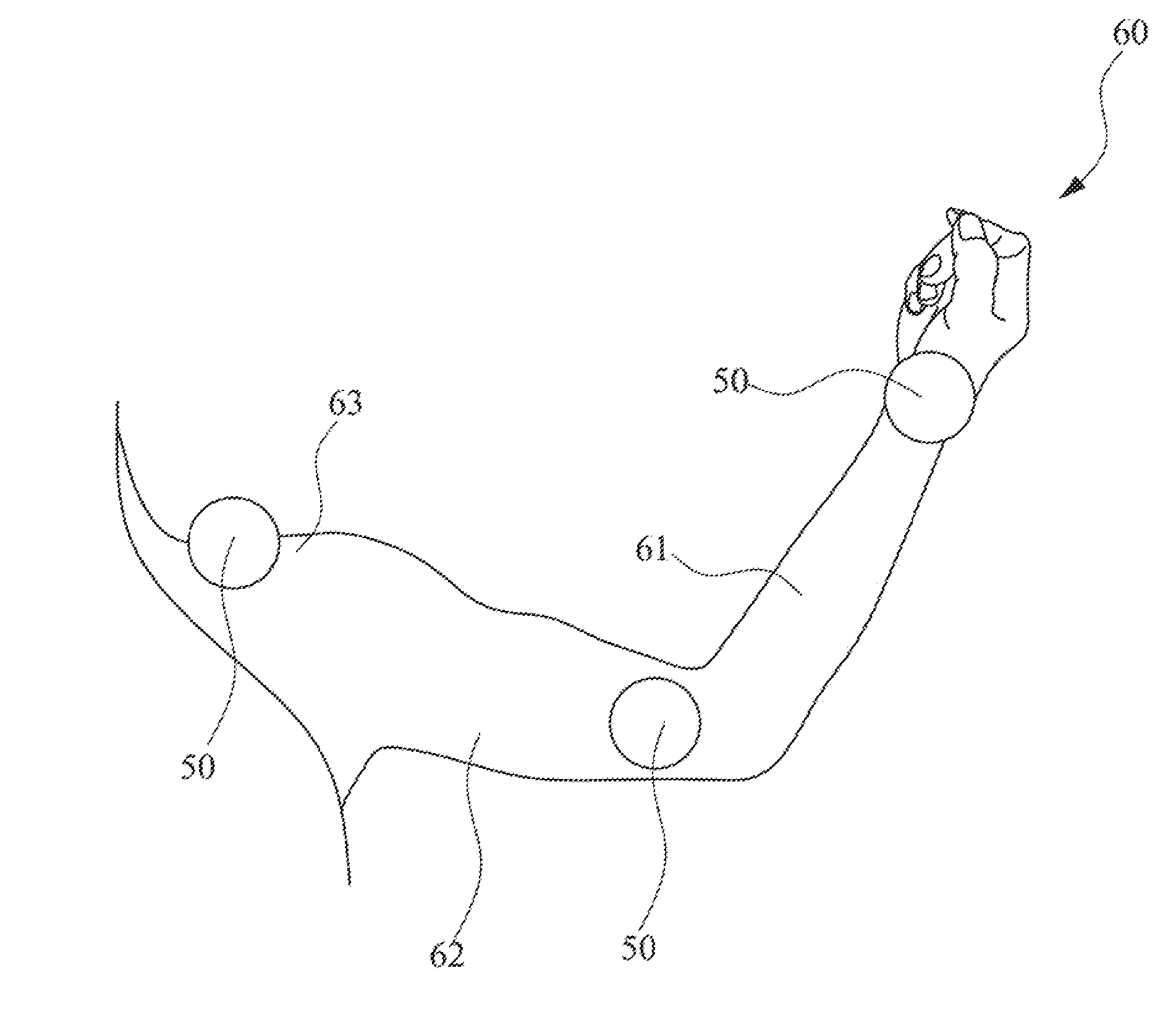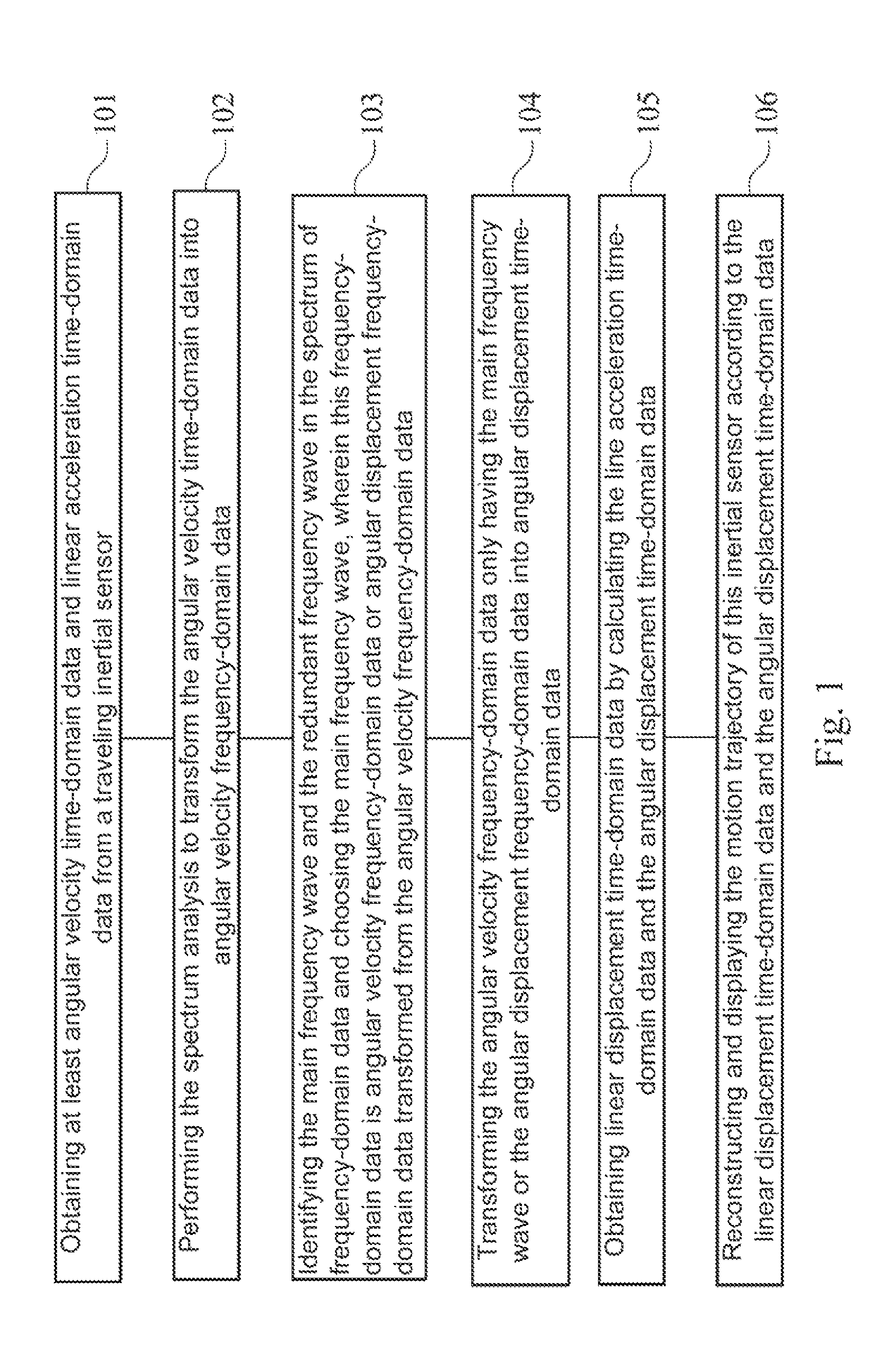System and method of motion trajectory reconstruction
- Summary
- Abstract
- Description
- Claims
- Application Information
AI Technical Summary
Benefits of technology
Problems solved by technology
Method used
Image
Examples
first embodiment
[0035]As shown in FIG. 3, it is detailed flow chart of the method of motion trajectory reconstruction in the invention.
[0036]The inertial sensors 50 are firstly configured before the flow chart starts (referring to FIG. 4). For example, multiple inertial sensors 50 are configured on a fore arm 61, an upper arm 62 and a shoulder 63 of a human arm 60, so that when a convolution motion of the human arm 60 is performed, an inertial sensing signal can be emitted continuously in real time by each of the configured inertial sensors 50. The inertial sensing signal contains linear acceleration data (or referred to as a signal) and angular velocity data (or referred to as a signal). The inertial sensor 50, for example, contains a tri-axial accelerometer and a tri-axial gyroscope. The accelerometer is used for measuring and recording the (linear) acceleration generated in the process of arm motion, and the gyroscope is used for measuring the angular velocity generated in motion.
[0037]In additi...
second embodiment
[0062]As shown in FIG. 6, it is a detailed flow chart of the method of motion trajectory reconstruction in the invention.
[0063]The inertial sensors 50 are firstly configured before the flow chart starts (referring to FIG. 4). Details can be referred to the above description, which are not illustrated any further herein.
[0064]In step 601, the angular velocity time-domain data and the linear acceleration time-domain data fed back by the inertial sensors start to be recorded. In step 602, the spectrum analysis is performed to transform the angular velocity time-domain data into the angular velocity frequency-domain data. Since the steps 601-602 are identical to the steps 301-302 of the first embodiment, these steps are not illustrated any further herein.
[0065]In step 603, the angular velocity frequency-domain data is transformed into the angular displacement frequency-domain data. The difference between the step and the first embodiment is that, the angular velocity frequency-domain da...
third embodiment
[0075]As shown in FIG. 7, it is a detailed flow chart of the method of motion trajectory reconstruction in the invention.
[0076]The third embodiment includes the steps 701-711, wherein in the step 701, the angular velocity time-domain data and the linear acceleration time-domain data fed back by the inertial sensor start to be recorded. In step 702, the spectrum analysis is performed to transform the angular velocity time-domain data into the angular velocity frequency-domain data.
[0077]In step 703, the angular velocity frequency-domain data is filtered. In step 704, the angular displacement time-domain data (i.e., the angular displacement value) is obtained from the filtered angular velocity frequency-domain data.
[0078]In step 705, the transition matrix is calculated from the angular displacement time-domain data. In step 706, the global coordinate linear acceleration time-domain data is calculated from the linear acceleration time-domain data and the transition matrix. In step 707,...
PUM
 Login to View More
Login to View More Abstract
Description
Claims
Application Information
 Login to View More
Login to View More - R&D
- Intellectual Property
- Life Sciences
- Materials
- Tech Scout
- Unparalleled Data Quality
- Higher Quality Content
- 60% Fewer Hallucinations
Browse by: Latest US Patents, China's latest patents, Technical Efficacy Thesaurus, Application Domain, Technology Topic, Popular Technical Reports.
© 2025 PatSnap. All rights reserved.Legal|Privacy policy|Modern Slavery Act Transparency Statement|Sitemap|About US| Contact US: help@patsnap.com



